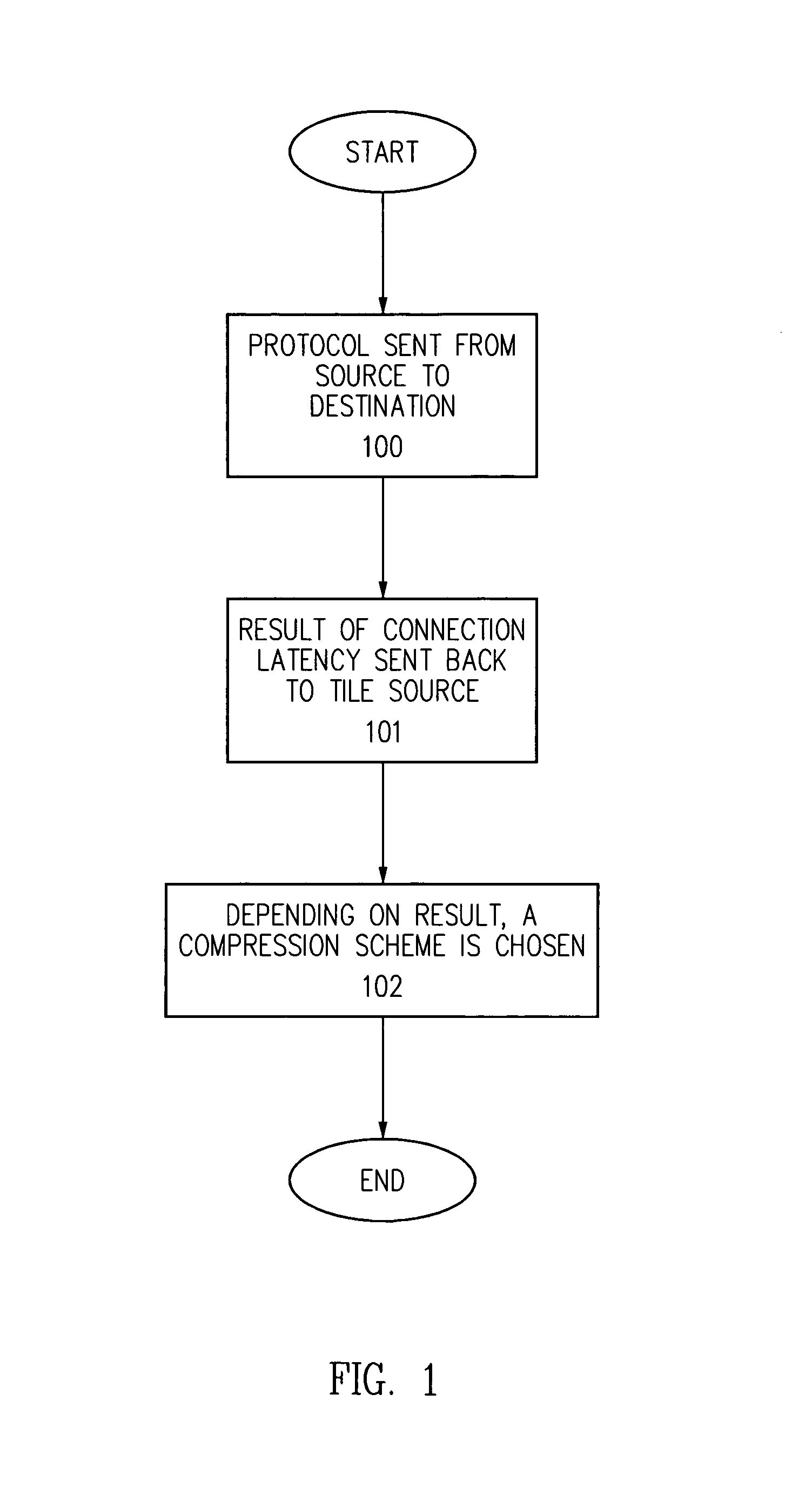Dynamic bandwidth adaptive image compression/decompression scheme
a dynamic bandwidth and image compression technology, applied in the software field, can solve the problems of video data being memory intensive, video data requires large amounts of memory, and the storage capacity of a cd-rom or a dvd-rom can be exceeded when storing motion picture length video data, so as to save cpu time on repainting and re-freshing
- Summary
- Abstract
- Description
- Claims
- Application Information
AI Technical Summary
Benefits of technology
Problems solved by technology
Method used
Image
Examples
Embodiment Construction
[0035]A method and apparatus for a dynamic bandwidth adaptive image compression / de-compression scheme is described herein. In the following description, numerous specific details are set forth to provide a more thorough description of embodiments of the invention. It is apparent, however, to one skilled in the art, that the invention may be practiced without these specific details. In other instances, well known features, like the packet switching techniques of networks like the Internet, circuit failures in the network, router overload analysis, or analysis of the general moment to moment load of the network have not been described in detail so as not to obscure the invention.
[0036]When data is transmitted over a network connection, according to one embodiment, a protocol message is continually sent from the source to the destination to establish the latency of the connection. This protocol message is similar to ping programs used to search a particular entity on a network, and hav...
PUM
 Login to View More
Login to View More Abstract
Description
Claims
Application Information
 Login to View More
Login to View More - R&D
- Intellectual Property
- Life Sciences
- Materials
- Tech Scout
- Unparalleled Data Quality
- Higher Quality Content
- 60% Fewer Hallucinations
Browse by: Latest US Patents, China's latest patents, Technical Efficacy Thesaurus, Application Domain, Technology Topic, Popular Technical Reports.
© 2025 PatSnap. All rights reserved.Legal|Privacy policy|Modern Slavery Act Transparency Statement|Sitemap|About US| Contact US: help@patsnap.com



